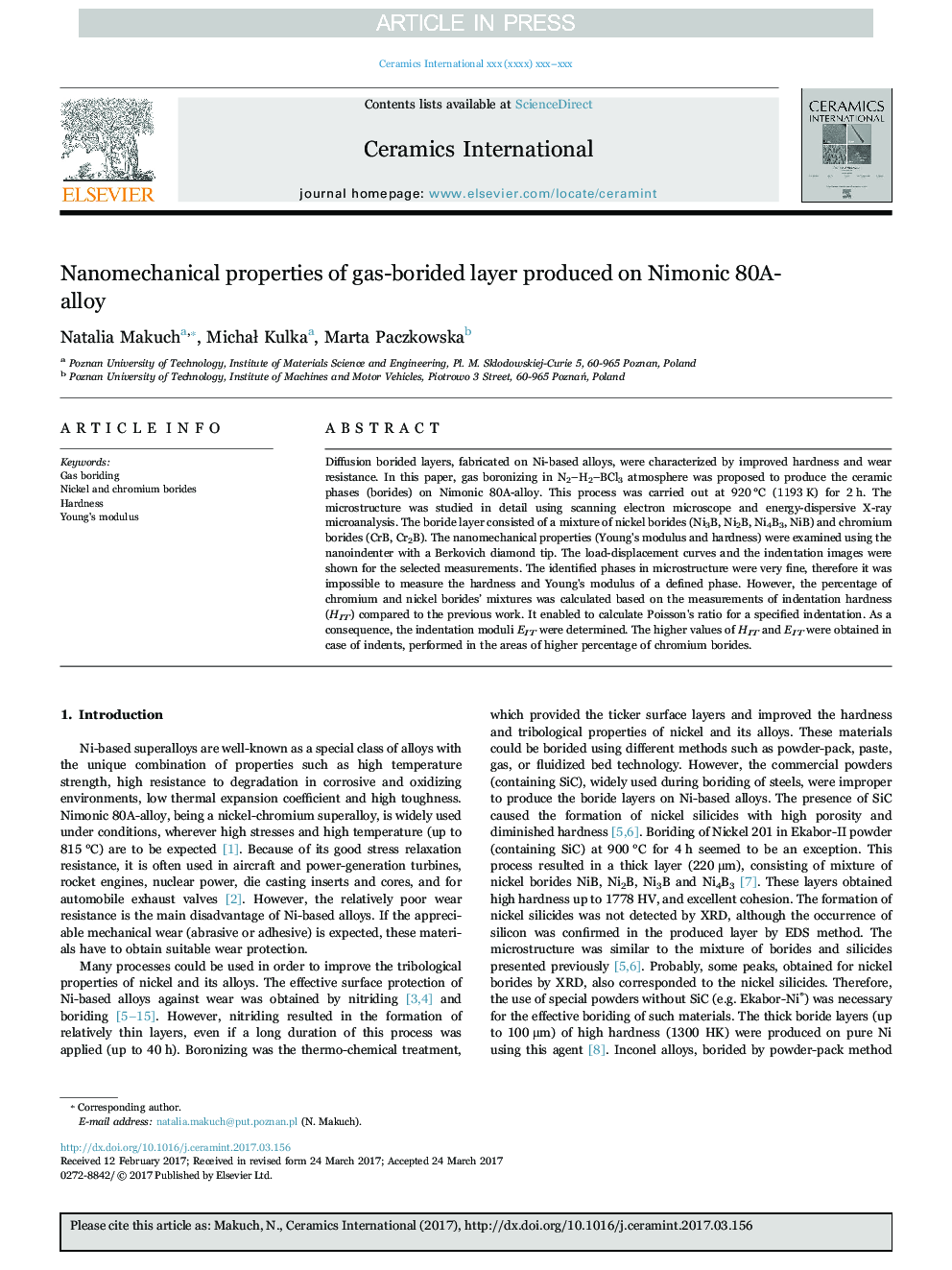| Article ID | Journal | Published Year | Pages | File Type |
|---|---|---|---|---|
| 5437747 | Ceramics International | 2017 | 7 Pages |
Abstract
Diffusion borided layers, fabricated on Ni-based alloys, were characterized by improved hardness and wear resistance. In this paper, gas boronizing in N2-H2-BCl3 atmosphere was proposed to produce the ceramic phases (borides) on Nimonic 80A-alloy. This process was carried out at 920 °C (1193 K) for 2 h. The microstructure was studied in detail using scanning electron microscope and energy-dispersive X-ray microanalysis. The boride layer consisted of a mixture of nickel borides (Ni3B, Ni2B, Ni4B3, NiB) and chromium borides (CrB, Cr2B). The nanomechanical properties (Young's modulus and hardness) were examined using the nanoindenter with a Berkovich diamond tip. The load-displacement curves and the indentation images were shown for the selected measurements. The identified phases in microstructure were very fine, therefore it was impossible to measure the hardness and Young's modulus of a defined phase. However, the percentage of chromium and nickel borides' mixtures was calculated based on the measurements of indentation hardness (HIT) compared to the previous work. It enabled to calculate Poisson's ratio for a specified indentation. As a consequence, the indentation moduli EIT were determined. The higher values of HIT and EIT were obtained in case of indents, performed in the areas of higher percentage of chromium borides.
Keywords
Related Topics
Physical Sciences and Engineering
Materials Science
Ceramics and Composites
Authors
Natalia Makuch, MichaÅ Kulka, Marta Paczkowska,
